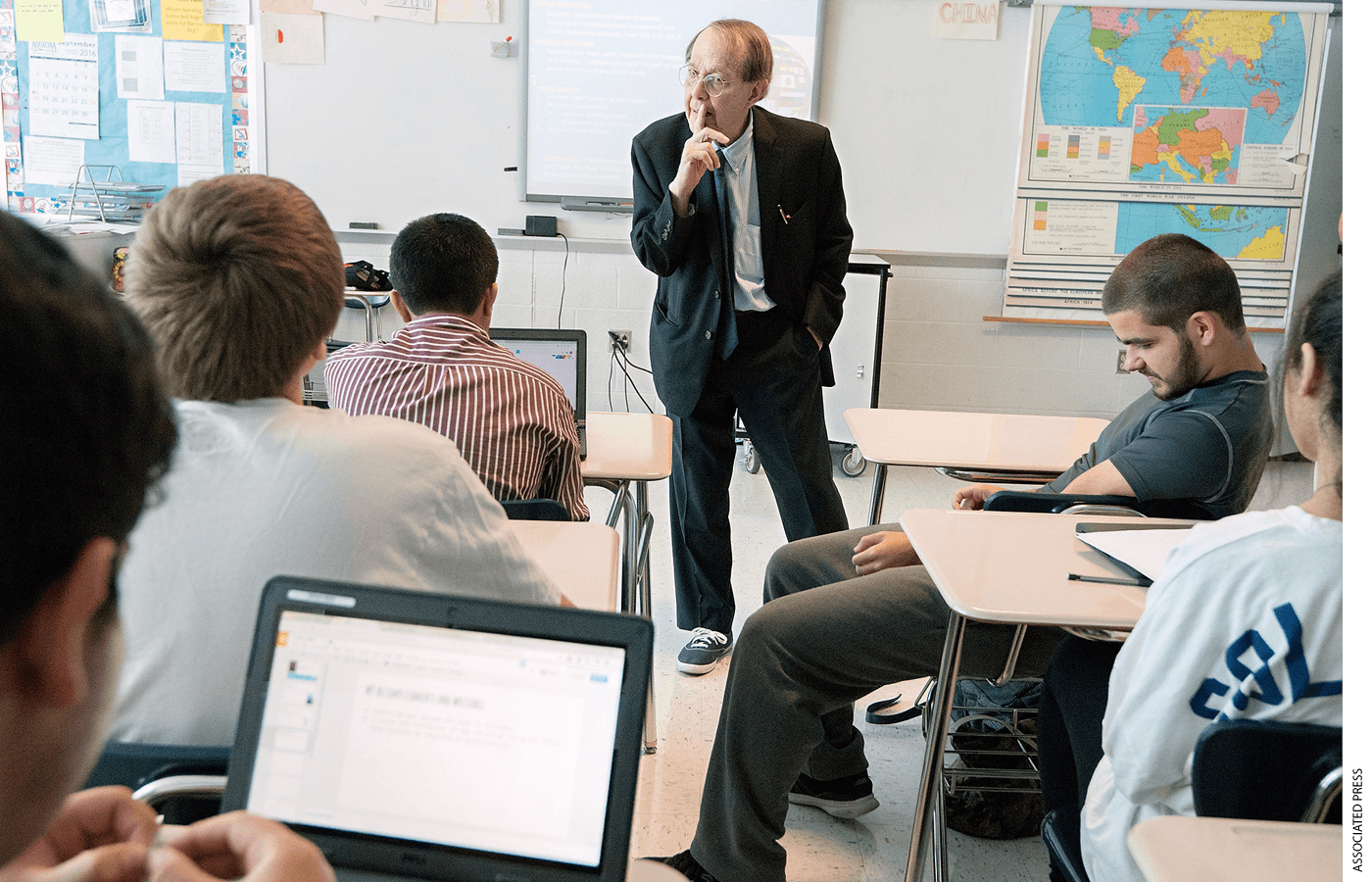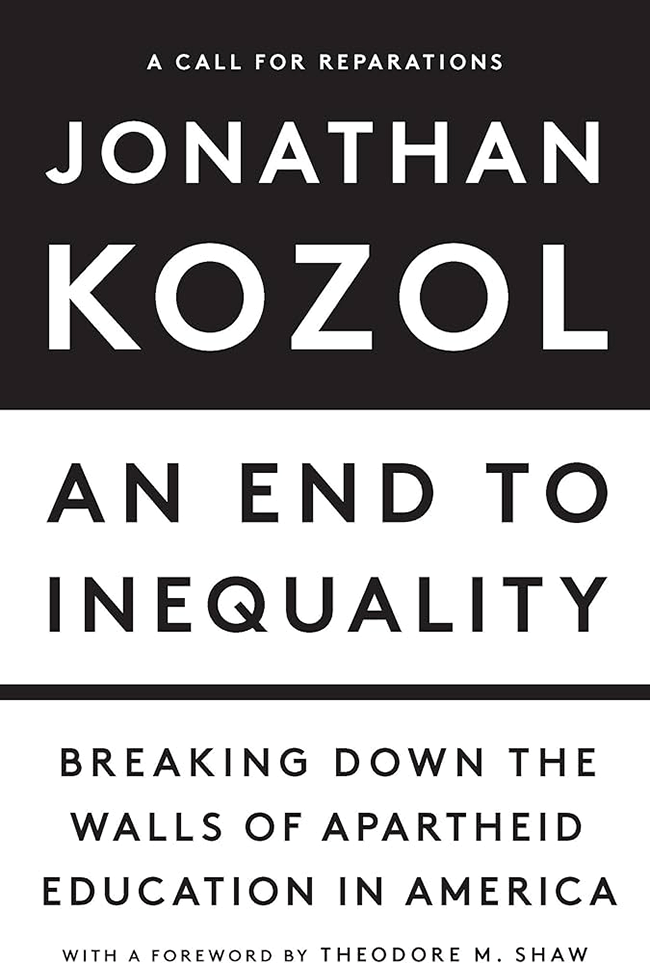
Jonathan Kozol is a legend. His work is like an eclipse, casting a long shadow over the decisionmaking and motivations of many people I respect, admire, and have learned from. Writers love words and, in a recent New York Times interview, Kozol recounted that the poet Archibald MacLeish, who taught him at Harvard, encouraged him to use strong ones. “There is a tendency to assume that the extremes of expression are always wrong,” he said, “and that the truth, by its own preference, likes to live in the middle. It doesn’t always live in the middle.”
It is both the sincerity and, in many respects, the necessity of his writing—which chronicles the plight of Black and Hispanic youth in urban school systems he sees as unfit for them—that gives his work such power. Beginning in 1967 with Death at an Early Age, which won the National Book Award, Kozol went on to write many influential books on inequalities in public schools. And it is the good he has done to illuminate the dark corners of American public education that has given him a godlike presence among advocates, policymakers, and practitioners desperate for change. That is why it is with delicacy that I say this god’s time has passed. And that Kozol’s latest work, An End to Inequality, though honest and thoughtful, lives on tablets that must be ground to dust—not only because of the author’s sins of omission, but also because of his unwillingness to countenance that the last step to liberating people from unresponsive systems lies not within the systems in question, but in the hands of free people empowered to choose.
Kozol comes in hot and wastes no time telling us what he opposes, in preparation for informing us of what he supports. The reader quickly discovers his stance on private school choice and what he labels “teacher training corporations.” Charter schools are, of course, not spared, with Kozol calling them “a major obstacle to integration” and accusing them of “extracting badly needed funds from the public schools with which they’ve been competing.”
Kozol saves some of his starkest imagery for school discipline policies that disproportionately affect Black and Hispanic students and that he believes are overly harsh. In describing one Boston public school’s use of a “calm-down room,” an Omelas-like closet where disruptive students were locked up, sometimes urinating on themselves in the process, his criticism is sharp and justified. No one should need persuading that such inhumane treatment of students in the nation’s schools, public or otherwise, is wrong. But it is difficult to ignore that so much of what Kozol opposes adds up to a caricature of the nation’s largest and highest-performing charter school networks. To call the critique thinly-veiled would give it a subtlety that is undeserved. While reasonable people may differ on the ultimate role of charter schools in urban school reform, it’s nonsensical to deny the extensive research showing their positive impact on the very same children for which he has written this cri de coeur.
It is in what Kozol is for that the book springs to life and his vision is presented. Yet it is this vision that warrants the sharpest criticism, not only for its sweeping top-down ethos, but also for the political and policy blind spots that ultimately undermine it.
Kozol, of course, loves teachers, describing one who personifies both his world view and his view of the profession as having “good personality—and feisty resistance to loss of her autonomy.” He also writes extensively about this teacher’s love for literature and desire to pass that on to her students, which is, of course, laudable. He is concerned about teacher attrition and believes poor facilities and low pay are at fault. He does not, however, acknowledge that pay in particular is, in most school districts, a function of teachers union collective bargaining, often with elected school board members endorsed by those unions. In fact, his lack of criticism for unions is startling. Kozol does not broach their “last-in, first-out” layoff policies that mean a young teacher with the profile he applauds will be the first to go in the event of downsizing, or address step-and-lane compensation practices that reward how long, not how well, someone has taught. Nor does he discuss the widespread staffing surges that, by increasing non-teacher headcount, likely also depress teacher compensation. In the end, teachers make what their unions negotiate for them. This point deserved more time and attention.
He makes a strong case for upgrading the facilities of urban students, citing a 2018 Washington Post story that reported the nation’s public schools were, on average, 45 years old—and much older in the country’s industrial cities. But here again he leaves out important information, failing to note that the public school system’s record on largescale school construction is tumultuous at best. For instance, a culture of patronage and corruption in New Jersey—which appropriated $8.6 billion to improve schools in its urban areas in the ’00s—led to the disbanding of the state’s Schools Development Authority, with a fraction of the proposed schools built and no money left. Not to mention the widespread spending of federal Covid relief dollars, as in Oregon’s Klamath County, on turf fields, renovated bleachers, a new gym, and resurfaced parking lots instead of efforts to address learning loss. Surely the public trust matters here.

by Jonathan Kozol
The New Press, 2024, $25.99; 240 pages.
Kozol cares a great deal about literature and the teaching of it. His origin story is grounded in the work of the great American poet Langston Hughes. But it is difficult to page through An End to Inequality without noticing the looming specter of balanced literacy and its barely literate children curled up happily in sunlit nooks. In a country where so many children struggle to read because they are taught to guess instead, and where teachers unions oppose following the science on how to teach reading effectively, one might have expected more than a passing nod to phonics-based instruction in the endnotes.
Kozol’s arguments for how to address the problems his book lays out rest on two things: school integration, as represented by the longstanding METCO program through which a fraction of Boston children attend public schools in the surrounding suburbs; and massive federal and state spending, grounded at least conceptually in a reparations framework, to support the expansion of such programs. And it is here that the primary criticism must, unfortunately, be levied, for both what is written and what is ignored.
A longtime advocate of school integration, Kozol is a devotee of the talented New York Times writer Nikole Hannah-Jones, who also believes integration is the most promising tool we currently have for improving student outcomes and, beyond that, our society. It is hard to argue against this position, and I agree that an integrated society is, indeed, a better one. But Kozol’s approach to achieving social integration seems unambitious at best and fantastical at worst. If we accept the premise that America is at its root a slavocracy, whose institutions, public schools chief among them, are forever distorted by this history, how will school integration undo this? Kozol, again derisively referring to “the charter school phenomena” and other alternatives, offers that “privatized, Jim Crow education cannot close up the nation’s wounds.”
His proposal for bringing about not just whole-system change, but also a change to the American soul, is to incentivize the suburbs to increase the number of students participating in METCO—now about 3,300—to between 10,000 and 15,000. He argues that white flight would not be an issue, asking the reader, “To what destination would white families flee if they were so inclined? Would they abandon their lives in proximity to Boston and move to Northern Maine?”
Sure, the suburbs “could” agree to an expansion of METCO, and they probably should, given the program’s record of results. But they haven’t, which exposes the blithe nature of hanging one’s hat on this approach. Kozol could, and should, also make the case for an end to residence-based school attendance zones, as sending kids to school based on where they live is a sure-fire way to bring about segregated public schools. He could, and should, advocate for diverse-by-design charter schools, which elide the entire problem of school segregation catalyzed by residential assignment. He could, and should, embrace a growing microschool and independent-school sector, which is nurturing, via the burgeoning classical-school movement, the love of literature he believes is so critical. In short, he could take a bold, all-in approach to achieving his goal, and his unwillingness to do so here is both telling and frustrating.
And then there is Kozol’s reparations gambit, of which he asserts, “If we’re ever going to speak of reparations in the world of education—not as ineffectual parlor conversation, but in realistic terms—battering down the walls that lock so many children into poorly funded and unhappy and perennially unsuccessful schools of racial isolation would be a good beginning.” It is here his argument falls apart, and the civil rights movement is instructive as to why. In outlawing segregation, the federal government did not undertake a sweeping program to build “equal” water fountains across the country. Instead, it granted the right to all Black persons to drink at any water fountain, wherever and whenever they choose. As Hughes’s famous poem “I, Too” reminds us, it is power vested in the individual that truly confronts the systemic order Kozol decries. One cannot achieve the transformation his reparations proposal seeks by giving money and power to the system that has harmed both the children about whom he writes so passionately and the national fabric that so rightfully concerns him. We must, instead, give money and power to the children and families who have been hurt by this system. Aggrieved and aspiring individuals who are empowered to choose could wield the pressure needed to spur change—the kind of change Kozol has pushed for throughout his career. This is what a reparations plan that directed resources to families could achieve.
Kozol has a storied history and in this, ostensibly his final plea, he makes a case for students who deserve a fair chance to create storied histories of their own. While it is his final chapter, for the rest of us it must be a preamble to a remaking of the American education system to empower every family.
Derrell Bradford is president of 50CAN, a national nonprofit that advocates for equal opportunity in K–12 education.
This article appeared in the Fall 2024 issue of Education Next. Suggested citation format:
Bradford, D. (2024). Jonathan Kozol’s Last Stand against School Inequality: Legendary reformer fights on for school integration and educational reparations but stops short of acknowledging the power of choice. Education Next, 24(4), 78-79.


